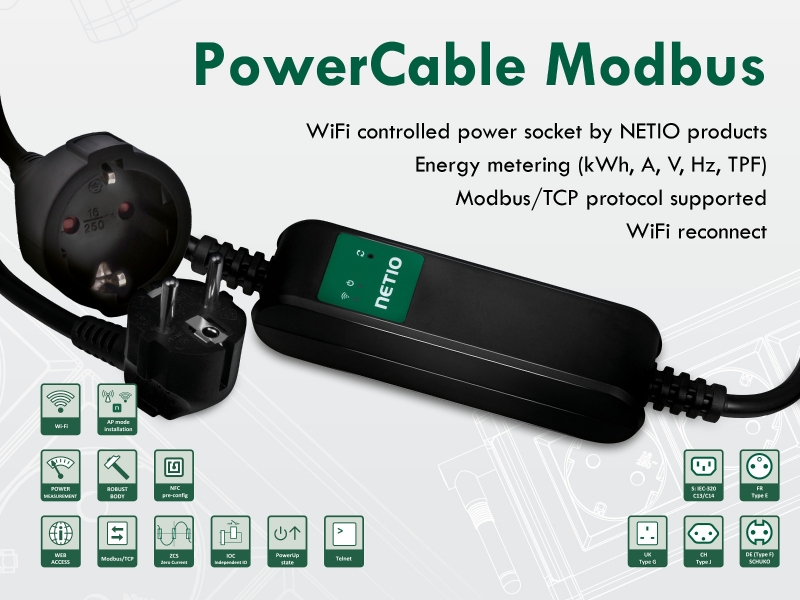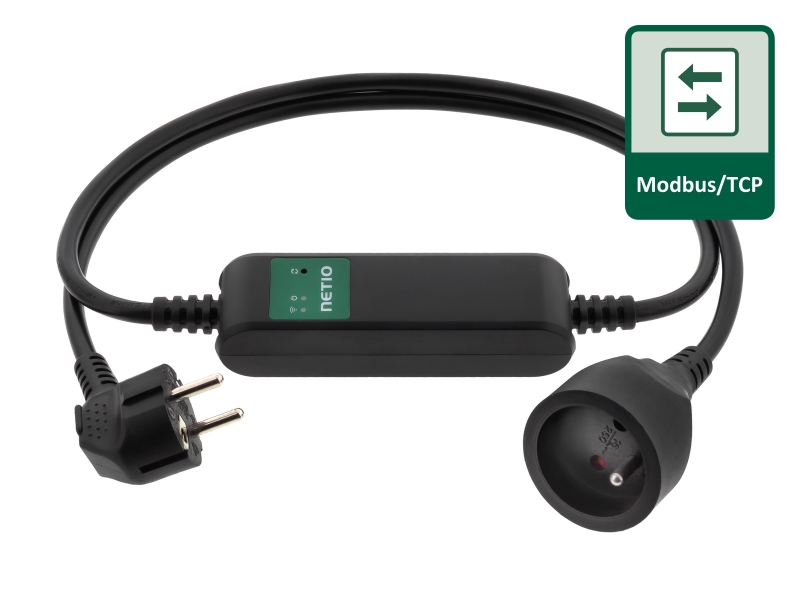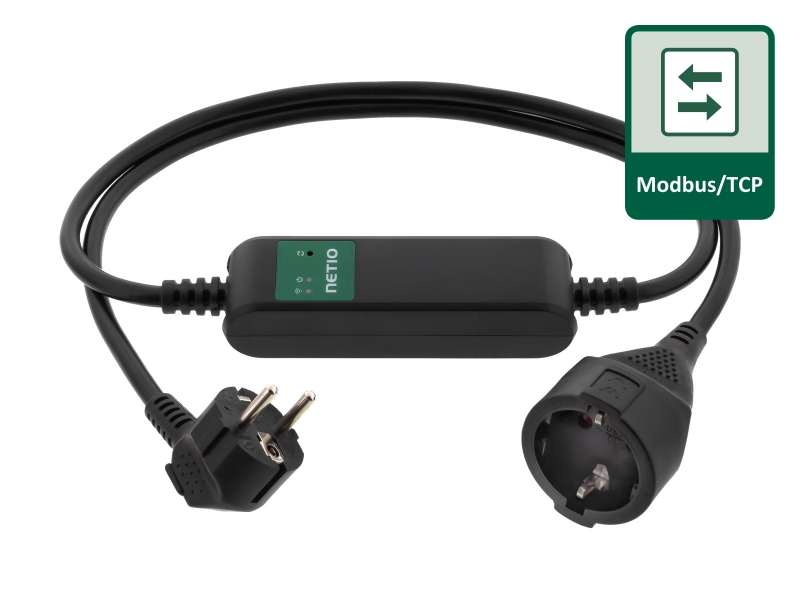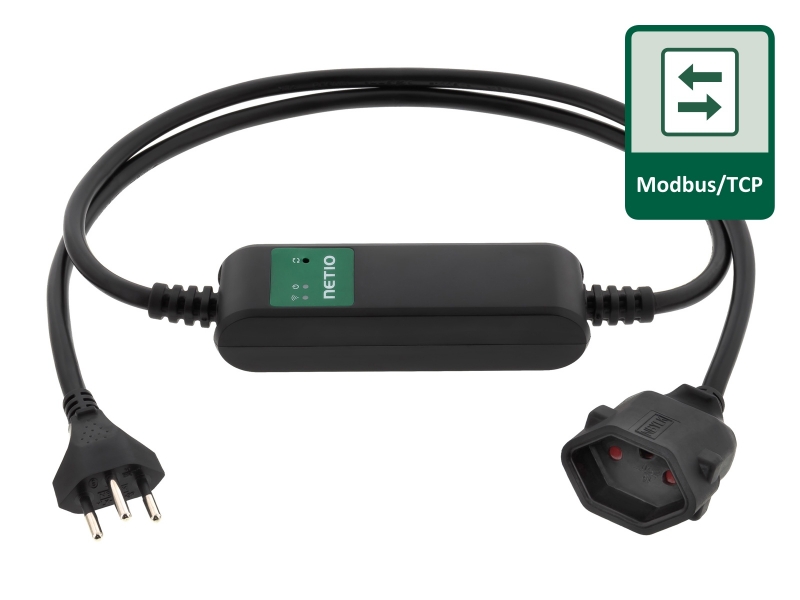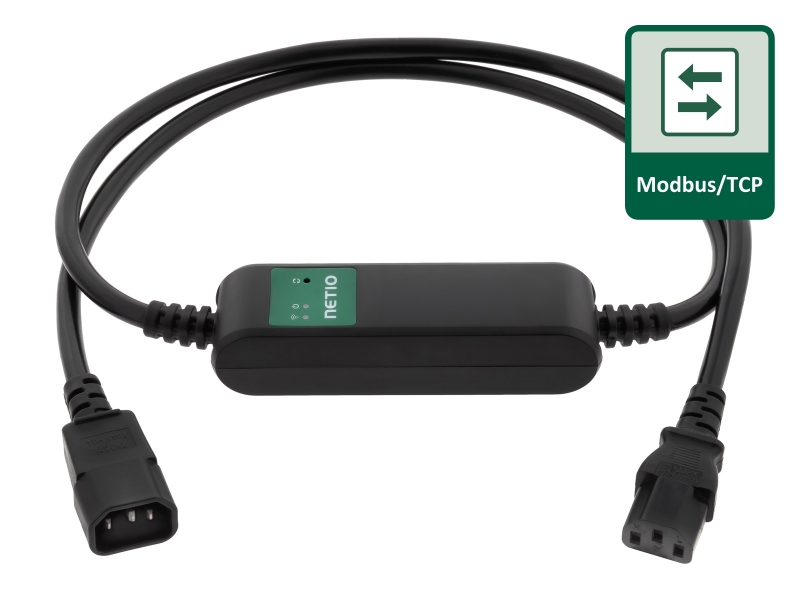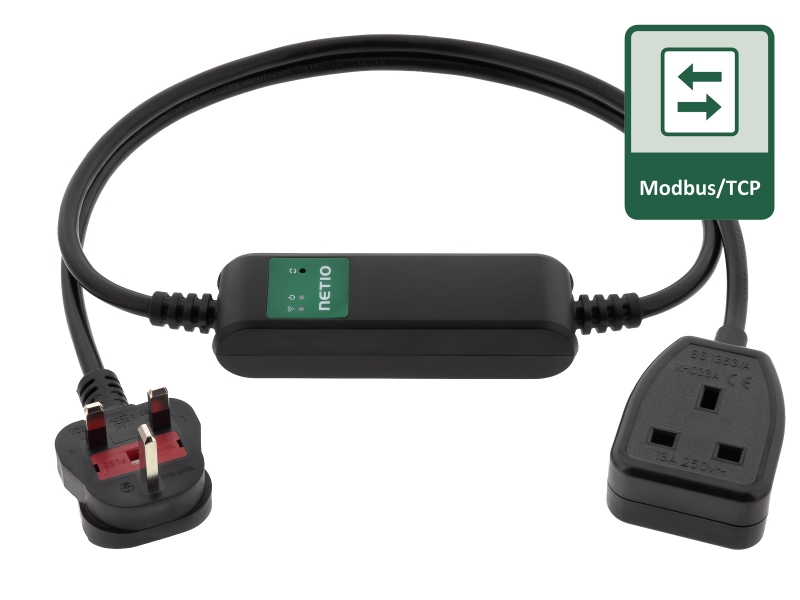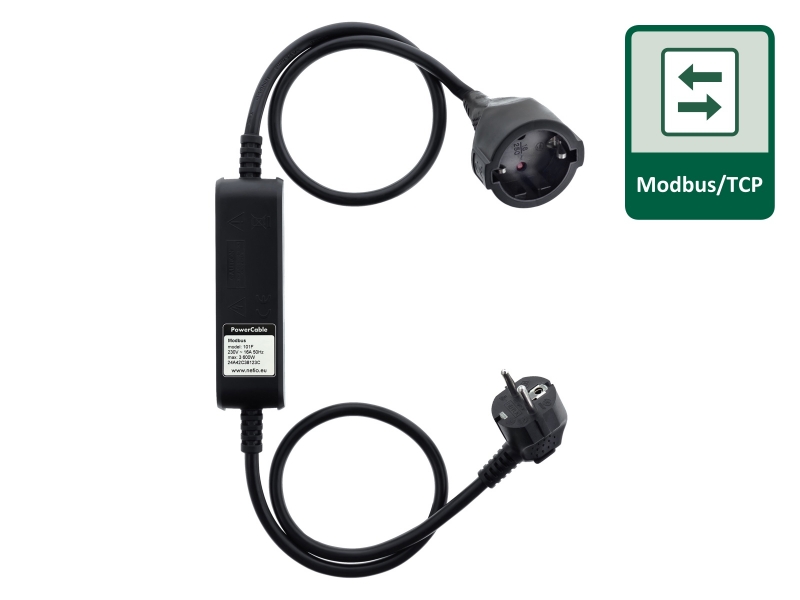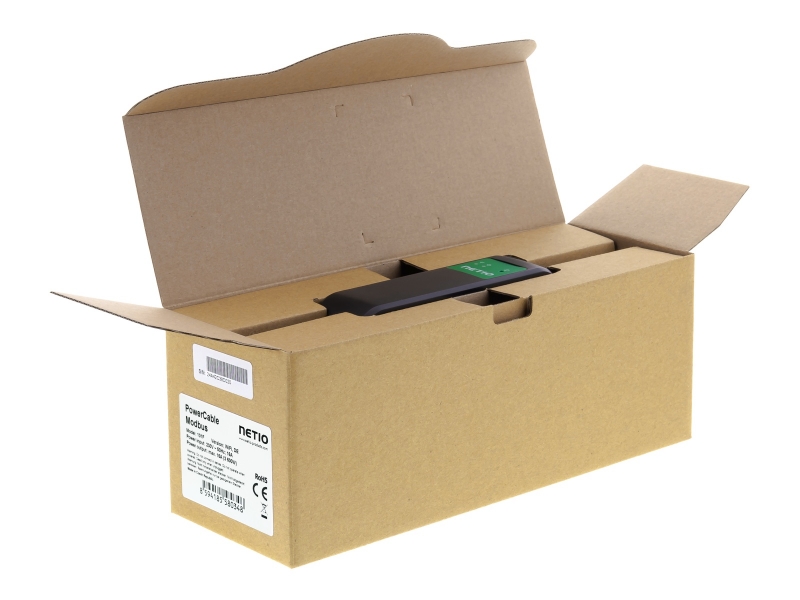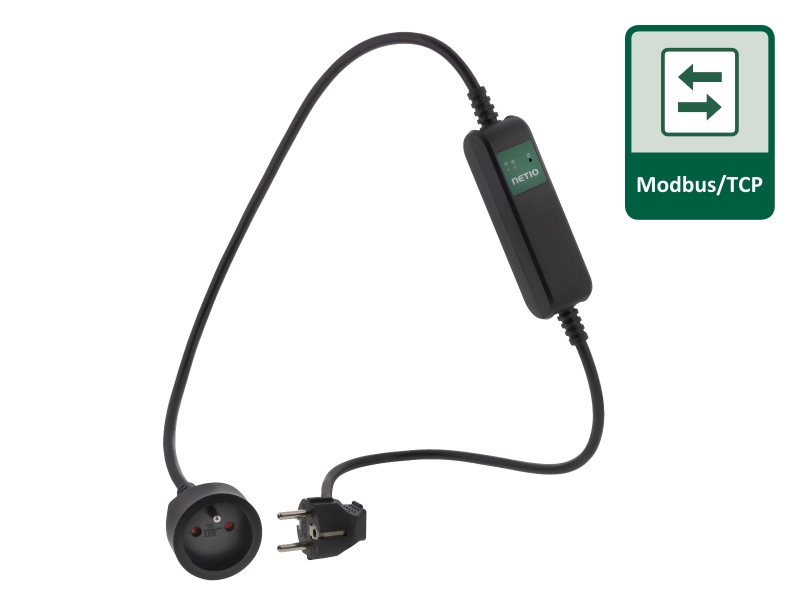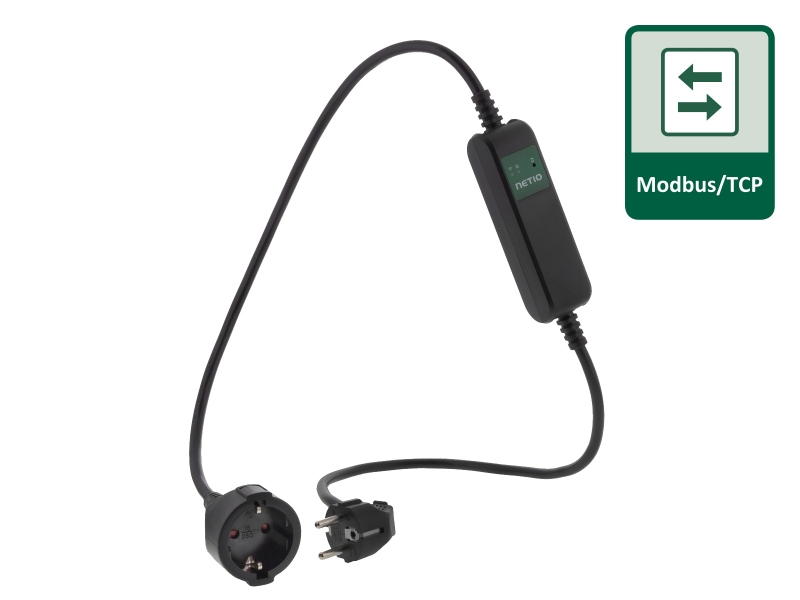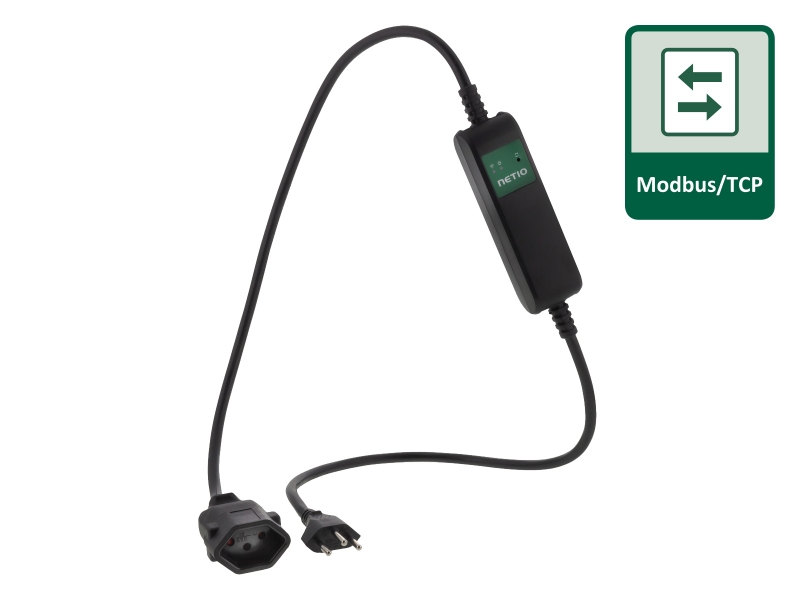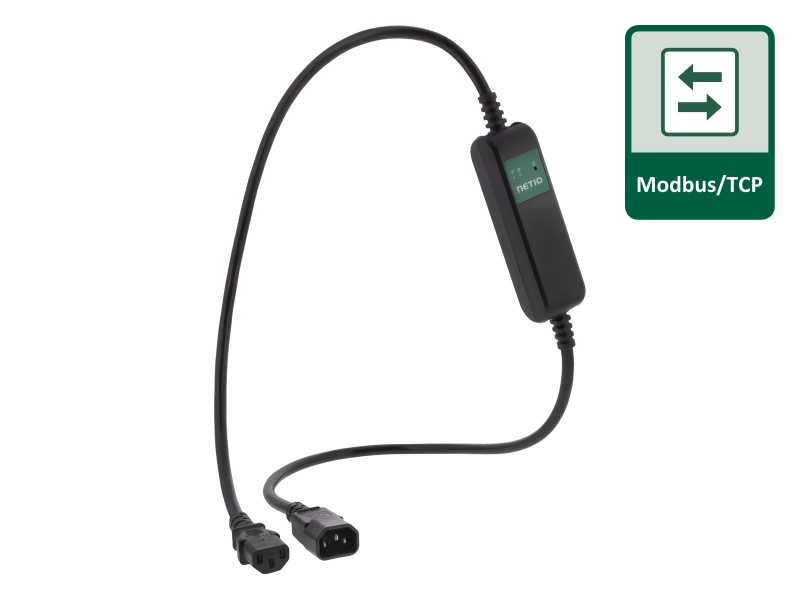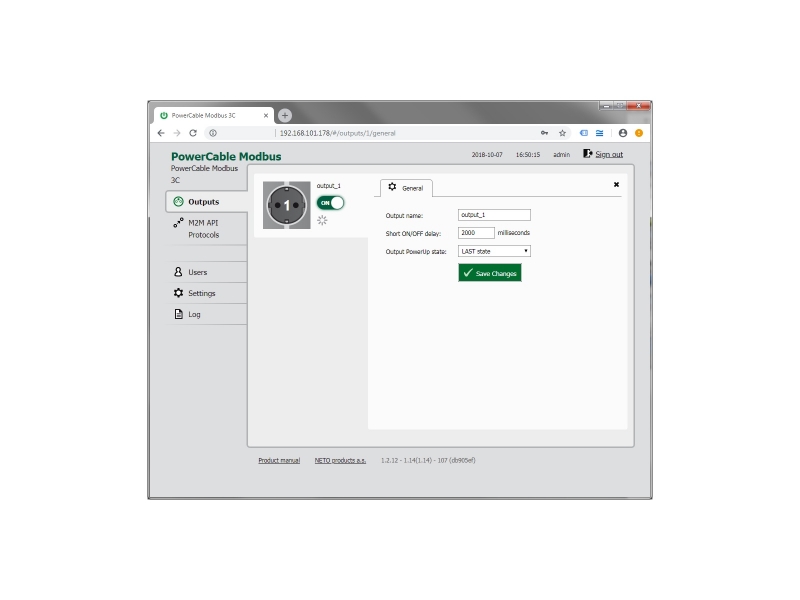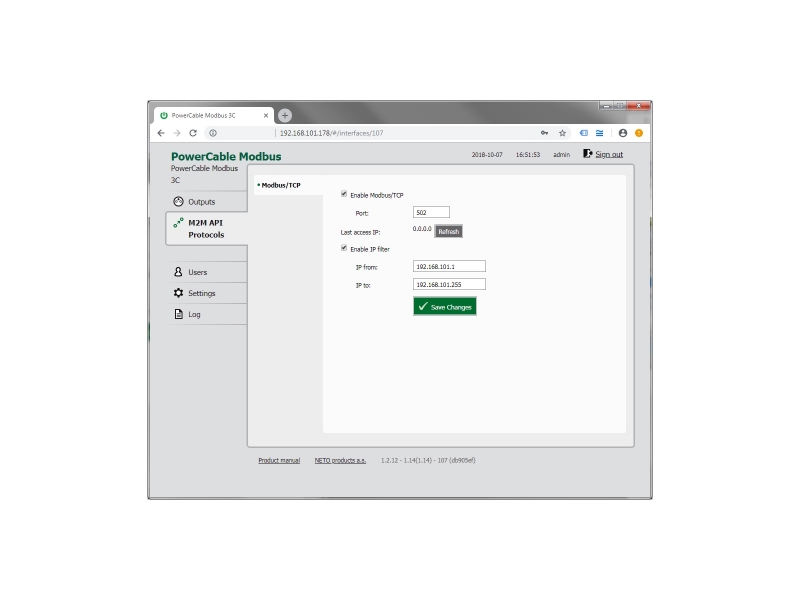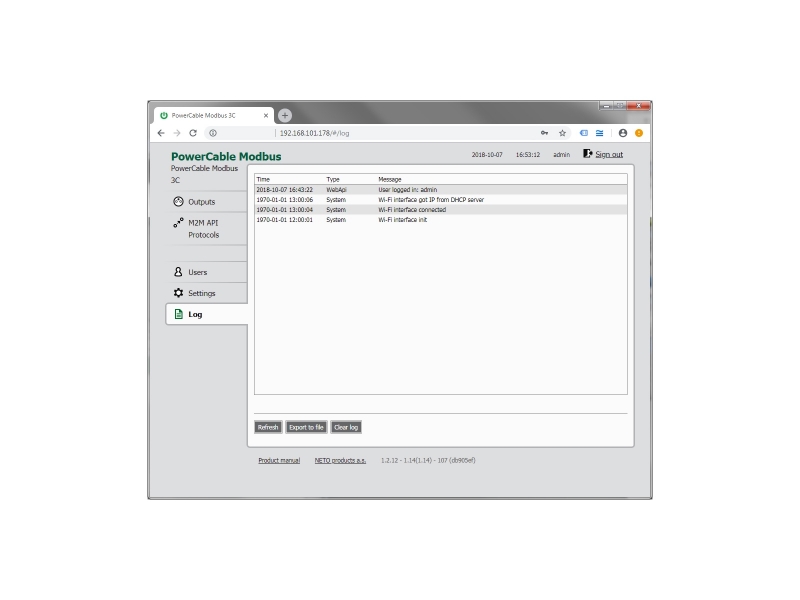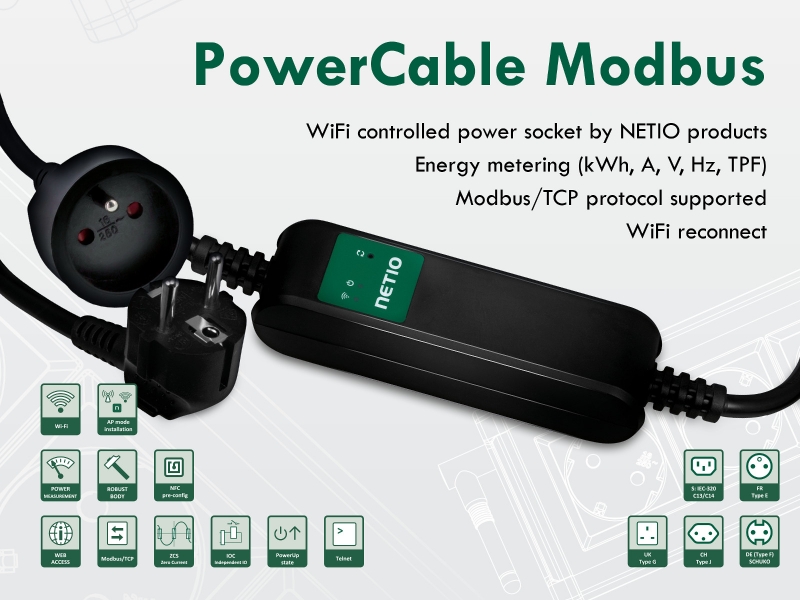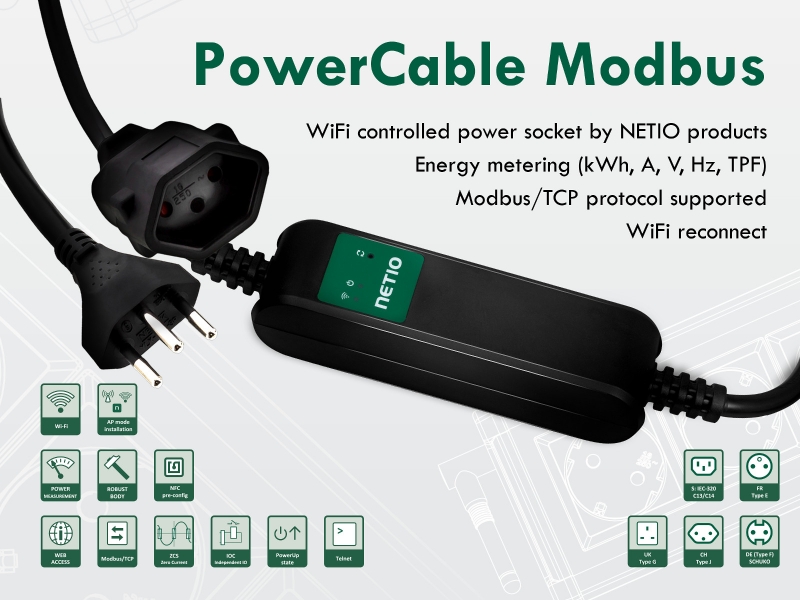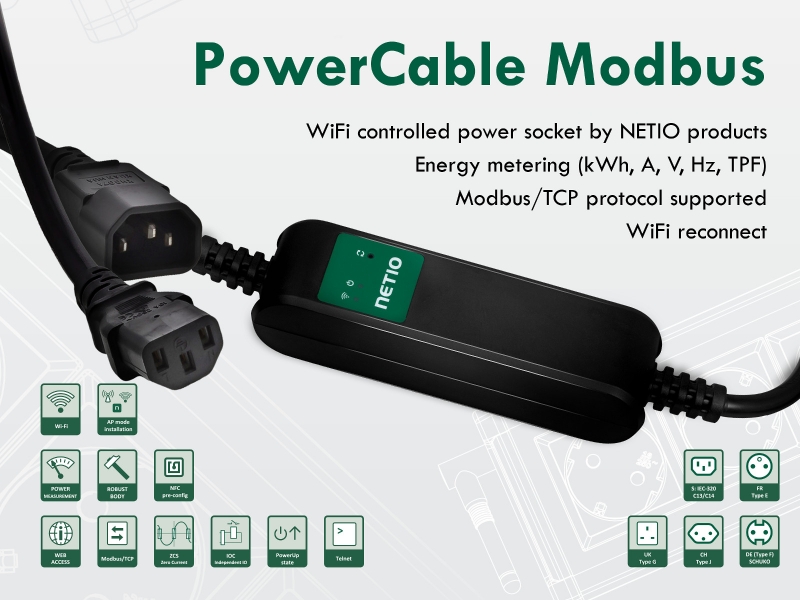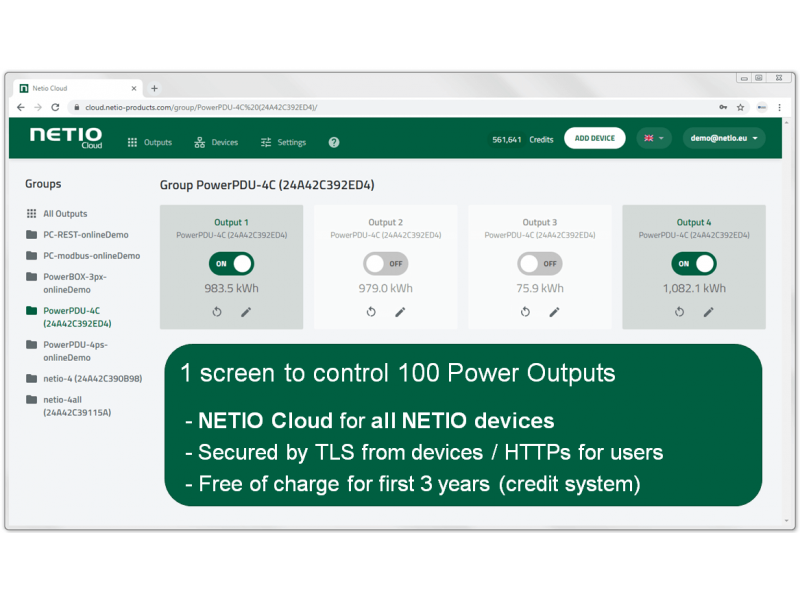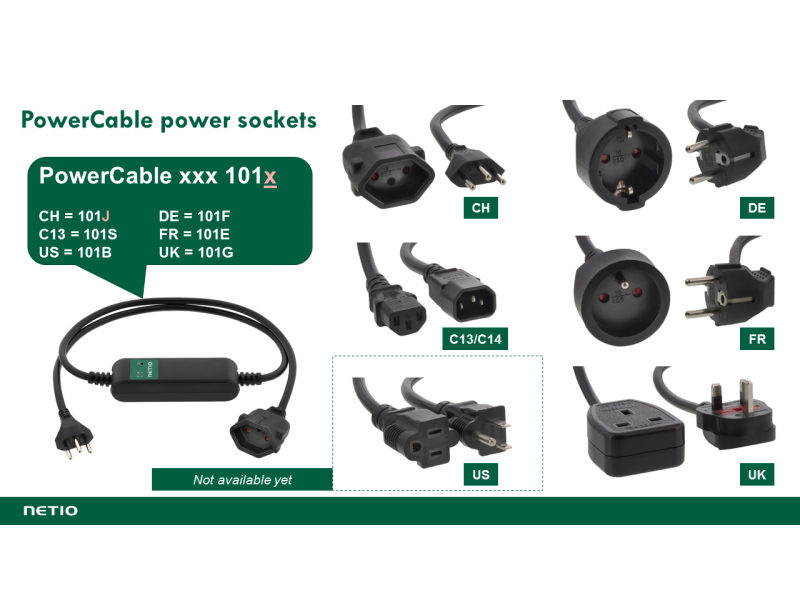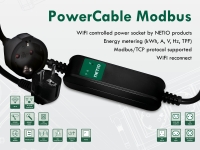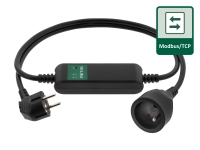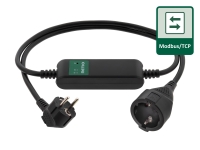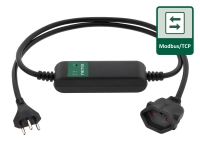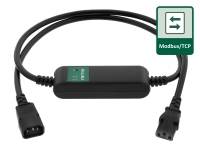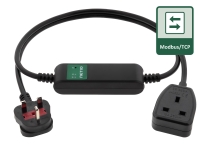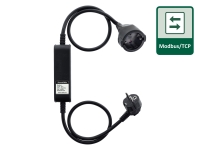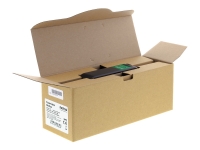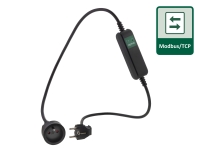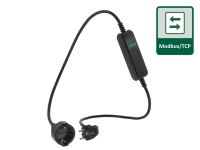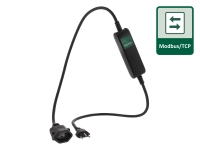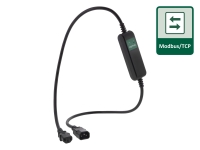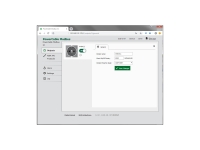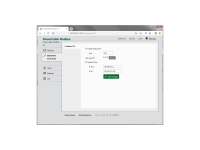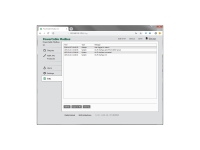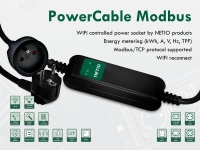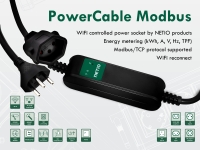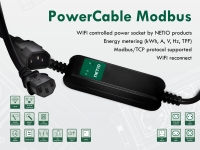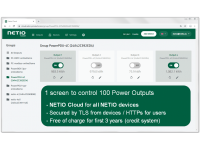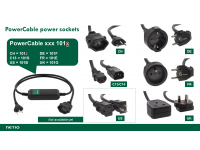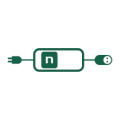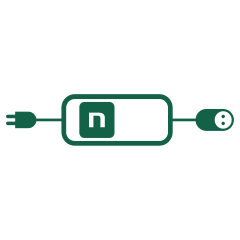NETIO PowerCable Modbus 101x is a smart WiFi power socket by NETIO products. The output smart power outlet can be turned on/off over a web interface. The web interface also shows measured electrical values (V, A, kWh, W, Hz, TruePF). PowerCable Modbus 101x supports the industry-standard Modbus/TCP protocol and Telnet protocol for M2M communication. This protocol makes it possible to measure energy consumption and control the output from PLCs, SCADA systems, smart home applications, and so on. With the NETIO Cloud service, the outputs can be controlled from anywhere. The NETIO Cloud service, provided for a fee, uses SSL security and servers in Europe.
|
This version of the product is no longer available. All functions of this model are now included in PowerCable REST 101x.
|
PowerCable can be used for metering or on/off switching of computer power supplies up to the electrical socket rating (10/16A according to version).
As a unique feature, the metered power socket supports ZCS (Zero Current Switching). This makes it possible to connect capacitive loads (switching power supplies) or inductive loads (transformers, motors) to the PowerCable.
The output can be switched on with a delay, in order to avoid circuit breaker tripping when power is restored after an outage. The metered power outlet can be switched on/off at any time with the button on the device (press 3 times).
PowerCable Modbus connects to the network using WiFi (internal antenna). The initial WiFi connection is very simple: PowerCable works as a WiFi AP, searches for available WiFi networks and asks the user to select from them.
The web interface is used to configure the product and switch the output on or off. Measurements of immediate current [A], voltage [V], energy consumed [Wh / kWh], grid frequency [Hz], input power [W] and TPF (True Power Factor) are also displayed in the web interface and can be read over the Modbus/TCP and Telnet M2M protocol.
The manufacturer, NETIO products, offers NETIO PowerCable Modbus 101x in four versions with different electrical outlet and power plug types used in different markets:
- PowerCable Modbus 101F DE socket (Type F - Schuko) is used in most of the continental Europe and can be used in Russia.
- PowerCable Modbus 101E FR socket (Type E) with an earth pin is needed in France, Belgium, Czech Republic, Slovakia and Poland.
- PowerCable Modbus 101J CH socket and plug (Type J) for Switzerland.
- PowerCable Modbus 101S Universal version usable world-wide with IEC-320 C14 (input) and C13 (output) for 110/230V 50/60Hz.
- PowerCable Modbus 101G UK socket and plug (Type G) for Great Britain.
WiFi Reconnect
The WiFi Reconnect function of the PowerCable Modbus 101x smart electrical outlet ensures a stable LAN connection even with an unstable WiFi AP, a necessity to switch over from one WiFi AP to another due to fluctuating signal, and so on.
Modbus/TCP and Telnet API
The PowerCable Modbus 101x smart power extension cable is designed for semi-industrial applications, where the Modbus/TCP protocol is the de-facto M2M standard. Modbus/TCP is supported by a majority of PLC, RTU, HMI, robots or smart home / smart building applications.
The metered power socket can be controlled over Modbus/TCP as a “coil” or with commands such as “Short ON”, “Short OFF”, “Toggle”. All measured values can be read over Modbus/TCP.
To ensure a basic level of security, the built-in IP FILTER can be used to limit the range of IP addresses allowed to access the device over Modbus/TCP.
- NETIO M2M Modbus/TCP documentation is available upon request.
- The NETIO implementation of Modbus/TCP can be tested as described in AN27 (Modbus/TCP with NETIO 4x - Control and measure LAN power sockets).
- The Modbus/TCP is identical for both PowerCable Modbus 101x and NETIO 4x products. So, the same configuration file or plugin can be used.
Application of M2M protocol Modbus/TCP
![]()
Modbus/TCP was originally designed for communication between a PLC (an industrial controller) and its sensors and actuators. It is considered an industry-standard, and it is very wide-spread thanks to its simplicity. There are many test utilities available and various smart building systems or audio/video presentation systems support it, too.
Modbus registers
NETIO PowerCable Modbus, being a WiFi controlled outlet, connects to a standard LAN via WiFi. The M2M communication using the Modbus/TCP protocol takes place over a standard TCP/IP connection at port 502.
Switching the power outlet 110/230V on or off:
- Modbus function 05 (Write Single Coil)
- Modbus register address 101 = 0/1
Toggling the power outlet 110/230V:
- Function 06 (Write Single Register)
- Modbus register address 101 = 4
Reading the current through the power outlet:
- Function 04 (Read Input Registers)
- Read the Modbus address 101 – the uInt16 value is the output current [mA]
NETIO Modbus/TCP specification:
NETIO Cloud
This product can be connected to the NETIO Cloud service (100 outputs can be controlled from 1 web screen). NETIO Cloud is an ideal solution for remote control and restarting.
The paid NETIO Cloud service is operated by NETIO products a.s. as a support for manufactured equipment.
- All products manufactured by NETIO products can be connected to NETIO Cloud.
- The user can control connected devices securely via the web from anywhere (HTTPs).
- The first 3 years are free connection to the service thanks to the "Welcome credit".
- NETIO Cloud can be used in parallel with other Open API protocols.
- Secure device communication to the Cloud service (port 8883 - MQTTs - TLS)
- NETIO Cloud has its own Open API, which can be used to control all devices in a specific user account (MQTTS protocol).
>> More about NETIO Cloud service
ZCS (Zero Current Switching)
An important feature of PowerCable Modbus 101x is ZCS (Zero Current Switching). Zero Current Switching support means that PowerCable Modbus connects or disconnects its 110/230VAC output using a relay when the immediate current value is close to zero.
- Thanks to ZCS, PowerCable can control switching power supplies (servers, computers and other IT equipment) rated up to the maximum of the given mains outlet (16A / 10A).
- Using ZCS (Zero Current Switching) to switch on the output significantly reduces the chance of a circuit breaker tripping when power is restored after an outage.
- Since the relay switches when the sinusoidal current curve crosses zero, negative effects of inrush current are significantly reduced.
- ZCS reduces EMC interference generated by connecting and disconnecting 230V appliances
- ZCS increases the durability of the device (internal relay).
- ZCS reduces the failure rate due to a damaged relay
>> More about Zero Current Switching
IOC (Independent Output Control)
PowerCable Modbus can be used for professional applications, such as powering servers. Output control is completely independent of the WiFi communication subsystem.
The on/off status of the WiFi controlled outlet is not affected by any WiFi disconnection, internal device reboot, or remote firmware upgrade
>> More about IOC (Independent Current Control)
PowerUp state
For some applications, it is important to set the power outlet status immediately after the device is powered on (or the power is restored after a failure). With some machines it is important to avoid momentary switch-on or switch-off. This parameter therefore defines the behavior of the 110/230V output power socket before the standard communication with a master system starts to work
- On
- Off
- LAST state restores the last state before the power was disconnected
Delayed switch-on function ensures that the 110/230V power output is switched on with a configurable delay (several seconds) after the power is restored. This can avoid circuit breaker tripping when power is restored after an outage.
Electrical measurement
PowerCable Modbus 101x measures the most important electrical parameters. All measured values are shown in the device web interface and can be read over Modbus/TCP. Use the device e.g. as a WiFi power meter.
- Current [A]
- Output power [W]
- Energy [Wh]
- TPF (True Power Factor)
- Voltage [V]
- Mains grid frequency [Hz]
- Phase [-180...180°]
>> More about electrical measurement
Quick WiFi connection setup
The package includes the PowerCable QIG with instructions on how to quickly connect the device to your WiFi network and perform initial configuration over the web interface.
- NETIO PowerCable creates a WiFi network that you connect to with your PC or mobile phone.
- It then scans for WiFi networks in the vicinity, and lets you choose from a list and type the password
- NETIO PowerCable then confirms the connection to the network and displays the assigned IP address
- NETIO PowerCable devices can be discovered in the LAN using the NETIO Discover tool.
![]()
Mobile Application
PowerCable Modbus 101x can be controlled over the local network using the NETIO Mobile 2 app (for Android mobile devices).
- The mobile app can be used to control several devices and all their outputs.
- The mobile device must be connected to the same LAN (via WiFi).
- NETIO Mobile2 can scan the LAN and discover connected devices. WiFi connection to the LAN is required.
NETIO Mobile 2 is not available for iOS users. We recommend using third-party apps:
- AN39 NETIO and third-party mobile apps for iPhone – iOS (URL API, Telnet, Modbus)
- AN38 NETIO and third-party mobile apps for Android (URL API, Telnet, Modbus)

